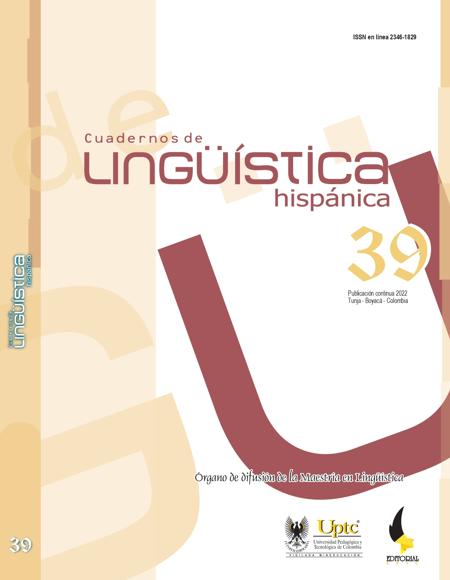Lexical Competence and Processes of Semantic Variation in Parlache Verbs

Abstract
This paper arises from a documentary-type diagnostic exploration, which is configured as theoretical, monographic and descriptive, and uses secondary sources, essentially those designated by semantic linguistic theory and by American, Latin American and Colombian sociolinguistic studies. Its objective is to inform about the way in which the users’ lexical competence must resolve the resemantization given in the verbs of the variety of the Colombian speech called ‘parlache’. The observed phenomena were, above all, the different types of lexical units in which the resemantized verbs participate and the processes and strategies involved in their production and understanding. It is concluded that lexical competence, as the ability to relate forms to meanings, resorts to referents, conceptual and functional associations, semantic relationships, lexicogenesis, phraseological units, registers, and levels of use, so it appeals to referential and inferential aspects.
Keywords
lexical competence, verbal resemantization, parlache, linguistic sign, variation, semantic processes
References
- Agudelo, C. & Pasuy, Y. (2020). Lecciones semánticas: la resemantización y la metáfora. En M. Cisneros (ed.), Usos y teorías: estudios de la maestría en lingüística (pp. 127-139). Editorial UTP.
- Aitchison, J. (1987). Words in the Mind. An Introduction to the Mental Lexicon. Basil Blackwell.
- Banzhaf, H. (2006). La simbología y significado de los números. Edaf.
- Bickerton, D. (1975). Dynamics of a Creole Syntax. Cambridge UP.
- Castañeda, L. & Henao, J. (2001). El Parlache. Editorial Universidad de Antioquia.
- Castañeda, L. & Henao, J. (2006). Diccionario de Parlache. La Carreta.
- Chomsky, N. (1970). Aspectos de la teoría de la sintaxis. Aguilar.
- Creuce, D.A. (1986). Lexical Semantics. Cambridge.
- Díaz Rojo, J. A. (2002). ¿El fonosimbolismo: propiedad natural o convención cultural? Tonos Digital, Revista Electrónica de Estudios Filológicos, (3). http://www.um.es/tonosdigital/znum3/estudios/fonosimbDiazRojo.htm
- Geckeler, H. (1976). Semántica estructural y campo léxico. Gredos.
- Guiraud, P. (1960). La semántica. Fondo de Cultura Económica.
- Katz, J. & Fodor, J. (1963). The Structure of a Semantic Theory. Language, 39(2), 170-210.
- Labov, W. (1983). Modelos sociolingüísticos. Cátedra.
- Labov, W. (1996). Principios del cambio lingüístico. Gredos.
- Lahuerta, J. & Pujol, M. (1996). El lexicón mental y la enseñanza del vocabulario. En C. Segoviano (ed.), La enseñanza del léxico español como lengua extranjera (pp. 117-129). Iberoamericana.
- Lara, L. (1976). El concepto de norma en lingüística. El Colegio de México.
- Lara, L. (2004). De la definición lexicográfica. El Colegio de México.
- Le Guern, M. (1990). La metáfora y la metonimia. Cátedra.
- Llamas Saíz, C. (2005). Metáfora y creación léxica. Universidad de Navarra-EUNSA.
- López Morales, H. (2005). La sociolingüística del tabú. Interlingüística, 16(1), 7-20.
- Marconi, D. (2000). La competencia léxica. Machado Libros.
- Moreno Fernández, F. (2005). Principios de sociolingüística y sociología del lenguaje. Ariel.
- Moreno Fernández, F. (2010). Las variedades de la lengua española y su enseñanza. Arco Libros.
- Muñoz Núñez, M.D. (1999). La polisemia léxica. Universidad de Cádiz, Servicio de Publicaciones.
- Pottier, B. (1993). Semántica general. Gredos.
- Real Academia Española. (2022). Diccionario de la lengua española. Espasa- Calpe.
- Ruíz de Mendoza, F. (1999). Introducción a la teoría cognitiva de la metonimia. Método.
- Ullmann, S. (1967). The Principles of Semantics. Basil Blackwell.
